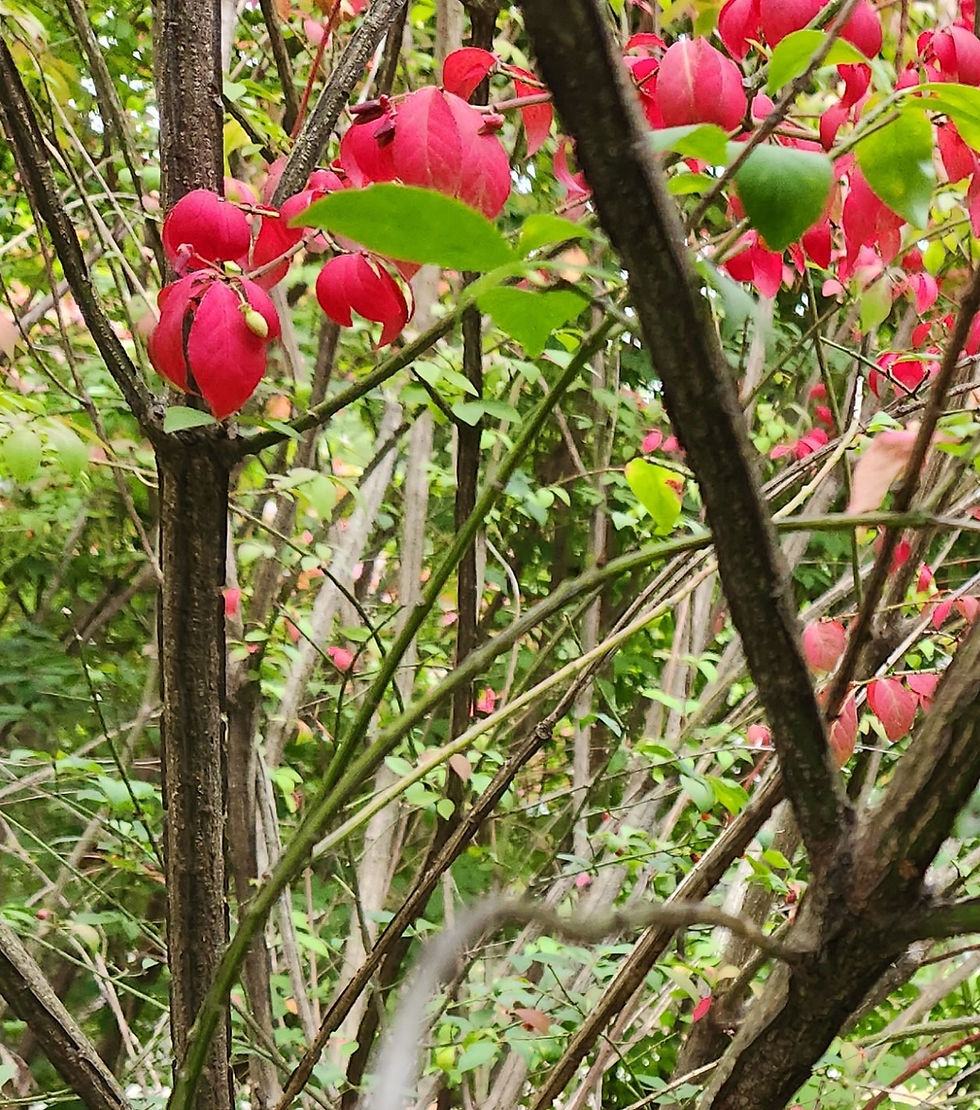Replacing Burning Bush aka Winged Euonymus with native shrubs
- saylorfarm
- Oct 12, 2023
- 2 min read
The invasive Burning Bush looks different in the woods, so it is not obvious that the landscape specimens have infiltrated Center Park, but they have!

We continue to cut back any Euonymus alatus at Center Park, but it never looks like the pretty one pictured here on Stearns Street. This is a seedling from the parent plants nearby. Many people claim that it does not seed itself much into the woods, but I beg to differ. Mike and I have cut back 43 Burning Bush seedlings from this area adjacent to Conservation land, and we have many more to go. When it is fall and they are bright red like this one---> they are easy to identify. When they are green and have an open airy structure, they look nothing like the landscape versions.

They may or may not have berries or turn bright red, depending on the sun/shade conditions. I am the first to admit that the color is astounding. Both the berries and the leaves are fire engine red. Unfortunately the berries are eaten by birds and then pooped out into the woods. The digestive blob of fertilizer probably helps them to grow well. That and their aggressive earlier-to-leaf-out in spring, and widely spreading congested root system have them displacing the native shrubs and groundcovers.

They may or may not have the corky ridges along the stems that give them one of their many common names "Winged Euonymus".

As you can see from the left image, the corky flanges along the stem might be totally absent!
iNaturalist is a good phone app to help identify this invasive shrub.
The Carlisle Garden Club is working on a helpful list of native shrub alternatives to replace this admittedly attractive, but environmentally "invasive" commonly planted bush. We at Center Park have many of these alternatives labelled for visitors to see in person. We encourage everyone to remove Burning Bushes and replace them with natives.



Comments